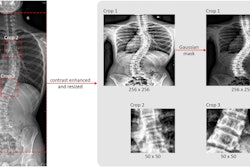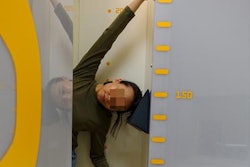Nighttime bracing may be an effective alternative to full-time bracing in patients with adolescent idiopathic scoliosis, according to a study published January 29 in JAMA Network Open.
In a clinical trial in Sweden, researchers measured Cobb angles on x-rays in participants using the strategy combined with physical activity and found the intervention prevented spinal curve progression, noted lead author Anastasios Charalampidis, MD, PhD, of the Karolinska Institutet in Stockholm, and colleagues.
“While longer hours of full-time brace wear have been shown to be superior to observation in terms of preventing curve progression, many patients experience resistance to adhering to full-time dosage or reject using a full-time brace altogether,” the group wrote.
Adolescent idiopathic scoliosis (AIS) is a structural deformity of the spinal column that affects otherwise healthy youths during their growth spurt. Approximately 10% of those with AIS develop a more aggressive deformity that requires treatment.
Previous studies have suggested that full-time bracing is effective in preventing spinal curve progression in these patients, yet compliance issues and its impact on quality of life suggest a need for alternative treatments, the researchers wrote.
The group explored the use of nighttime bracing in a cohort of 135 patients (nine to 17 years old) whom they split into three groups: 45 patients in each group performed self-mediated physical activity combined with either nighttime bracing, scoliosis-specific exercise (SSE), or physical activity alone (control group).
The trial was conducted from January 2013 through October 2018 in six public hospitals across Sweden. The primary outcome was curve progression of 6° or less (treatment success) or curve progression of more than 6° (treatment failure) seen on posteroanterior standing x-rays before and after the intervention.
According to the findings, treatment success was seen in 34 of 45 patients (76%) in the nighttime bracing (NB) group, in 26 of 45 patients (58%) in the SSE group, and in 24 of 45 patients (53%) in the physical activity (PA) alone group.
“NB produced a greater success rate in preventing progression of the scoliotic curve compared with a control group. Of note, there was no statistically significant difference in success rate for SSE compared with the PA group,” the group wrote.
Evidence on the effectiveness of nighttime bracing is scarce in the literature, and this was the first fully randomized clinical trial that investigated its effectiveness in patients with moderate-grade AIS, the researchers noted.
“The findings of the present study have direct clinical implications, as we provided evidence on the effectiveness of [nighttime bracing] to reduce the risk of curve progression in patients,” the researchers concluded.
The full study is available here.



















